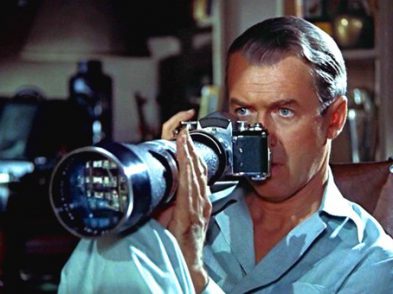April 25 marked the 66th anniversary of Italian liberation from fascism. This year, the national holiday fell on pasquetta, the day after Easter, marking rebirths both religious and national. On that day, president of the Italian Republic Giorgio Napolitano commemorated a young Florentine man who was brutally killed by Fascists in 1938: Napolitano awarded Mario Pucci a post-humous gold medal. Although the day has now passed, those wishing to commemorate April 25 and the men and women who fell in the name of freedom, can do so throughout the year. Below are several itineraries in Florence and Tuscany, provided by Anne Saunders, a scholar of history and author of a guidebook to World War II sites in the region. Next time you’re planning a weekend excursion, include a site near your destination-or make it your destination.
Today Tuscany is at peace, but the roar and smoke of battle filled this region in the summer of 1944. How and why did World War II reach Tuscany?
The events of 1943 provide answers to those questions. In July 1943, Italy’s leaders deposed Mussolini. By early September they had withdrawn their nation from its alliance with Nazi Germany and agreed to an armistice with the Allies. The Germans quickly responded by occupying hundreds of villages and cities. From 1943 until May 1945, Allied armies fought to expel German forces from Italy in a series of battles known as the Italian campaign. Italian partisans aided this cause.
After liberating Rome in June 1944, Allied troops advanced north into Tuscany and from there into Emilia-Romagna and other regions. During those months, tens of thousands of soldiers died in combat and thousands of civilians were executed by German troops. Countless buildings were damaged or destroyed.
Today, monuments, museums, and cemeteries in Tuscany and other regions commemorate the events of World War II. A new guidebook, A Travel Guide to World War II Sites in Italy, makes these locations easier to find. The book is available online and at English-language bookstores in Florence and Rome. For more information, see www.travelguidepress.com.
Sites in and near Florence
To slow the advance of Allied forces, the Germans blew up all the bridges across the Arno except Ponte Vecchio, which Hitler had ordered spared. As you walk across Ponte Santa Trinità to Lungarno, on the left is a plaque noting that this bridge was built in 1569, destroyed by German mines on August 4, 1944, and rebuilt after the war.
The Germans used the magnificent Synagogue on via Farini as warehouse and stables when they occupied Florence. After the war, this temple was restored to its former glory. A massive stone block in the front garden lists the names of the 248 Jews deported from Florence to concentration camps. Attached to the synagogue is a museum that illustrates the history of Florence’s Jewish community from 1437 to modern times, including the deportations.
The Florence War Cemetery (just outside central Florence on Strada Statale 67) is one of 37 British Commonwealth WWII cemeteries in Italy. Its 1,632 headstones stand in rows that lead to a memorial overlooking the Arno. The inscriptions on the headstones show the diversity of the Commonwealth, which recruited soldiers for the Italian campaign from Britain, Canada, India, Nepal, South Africa, New Zealand and elsewhere.
The Florence American Cemetery lies about eight miles south of Florence, on via Cassia. Its 70 acres hold more than 4,400 graves. Near the entrance, a reception center welcomes visitors. Paths lead uphill to open buildings that display maps of the Italian campaign and the names of those missing in action. Every year on Memorial Day (the last Monday in May), veterans, civilians, and soldiers gather here to pay tribute with speeches and hymns (See TF 7 for more).
Sites around Tuscany
In and around the town of Borgo a Mozzano (near Lucca), visitors can tour the remains of bunkers, gun emplacements, a massive anti-tank wall and other structures that formed part of the Gothic Line, the Germans’ principal defensive system in northern Italy. This ‘line’ ran across Italy from one coast to the other, about halfway between Florence and Bologna, and was built by forced labor. Today, local volunteers work on preserving the sites and providing tours of the bunkers and related structures. To request a tour, visit www.borgoamozzano.org and click on ‘Linea Gotica.’
Another group of volunteers focuses on preserving war monuments and fortifications in central and eastern Tuscany. Its multi-language website (www.goticatoscana.eu) describes the group’s activities. One of its projects is a WWII museum in Scarperia, a town directly north of Florence. These volunteers also keep the memory of the war alive by attending commemorations and re-enacting local battles.
The Brazilian Expeditionary Force Memorial near Pistoia was built to honor the nearly 500 Brazilian soldiers killed in the Italian campaign. Their bodies were returned to Brazil in 1960, but this impressive memorial remains.
In Sant’Anna, a mountain village near Lucca, German forces killed more than 500 civilians, including children, women and the elderly. The site of the massacre has been turned into a national park that contains many monuments and a small museum. The museum displays the photographs of those who survived the slaughter and their accounts of the horrific experience (See TF 60 for more).
Just over the border between Tuscany and Emilia-Romagna lies the village of Castel del Rio, which houses its WWII museum in a Renaissance palace. The collection contains weapons, medals, military radios and other equipment found on local battlefields. Near the ticket desk hang photographs of a nearby monument that honors an American officer and the soldiers of the 351st Regiment, U.S. 88th Division. The officer was killed while leading a patrol near Castel del Rio. Today the mountain pass where he died is called Il Passo del Colonnello (‘Colonel’s Pass’).
About five miles north of Castel del Rio stands Monte Battaglia (‘Battle Mountain’), a peak that offers spectacular views of the surrounding countryside. The U.S. 88th Division fought German forces here for a week until the latter retreated. Today, several monuments commemorate the Allied victory and the contributions of Italian partisans. A plaque remembers all who died here by offering this prayer in Latin: ‘Once enemies, now friends, let us pray for peace in the world.’




